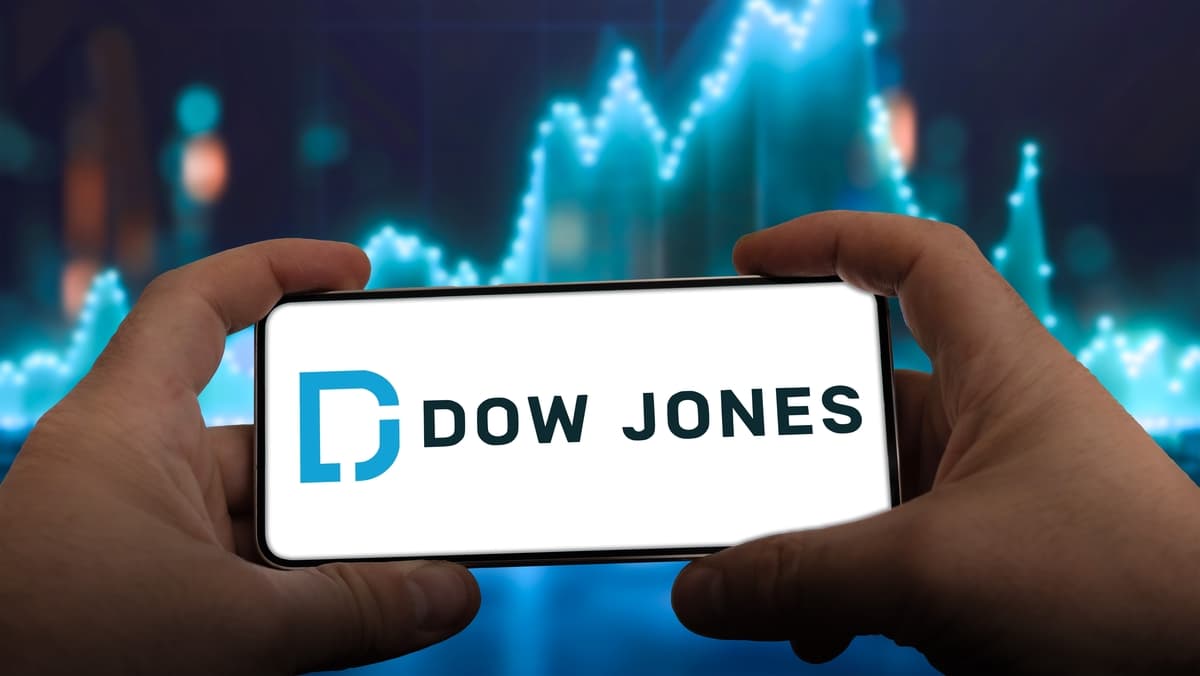
Thứ hai Aug 18 2025 06:53

6 phút

Stock Market Basics: the Dow Jones Industrial Average, commonly referred to as the Dow Jones or simply the Dow, is one of the most recognized stock market indices in the world.
Stock market today: It serves as a barometer for the overall health of the U.S. economy and provides insight into the performance of leading companies across various sectors. Understanding how the Dow works is essential for anyone interested in the stock market.
What is the Dow Jones?
The Dow Jones Industrial Average was created in the late 19th century by Charles Dow and Edward Jones. Initially, it comprised just 12 companies, primarily in the industrial sector. Over time, it has evolved to include 30 of the largest publicly traded companies in the United States. These companies are selected based on their prominence and represent a diverse range of industries, from technology to consumer goods.
Purpose of the Dow
The primary purpose of the Dow is to provide a snapshot of market trends and economic conditions. By tracking the performance of its constituent companies, the Dow aims to reflect the overall market sentiment and economic health. It is often referenced by financial media and used as a benchmark for comparing the performance of individual stocks or other investment vehicles.
How the Dow is Calculated
Price-Weighted Index
One of the unique aspects of the Dow Jones is that it is a price-weighted index. This means that the companies included in the index are weighted according to their stock prices rather than their market capitalizations. As a result, companies with higher stock prices have a more significant impact on the index’s movement compared to those with lower prices.
Calculation Method
The calculation of the Dow involves adding the stock prices of all 30 companies and then dividing that total by a divisor. This divisor is adjusted over time to account for stock splits, dividends, and other corporate actions. The resulting figure represents the average value of the index.
The Components of the Dow
Selection Criteria
The companies included in the Dow are selected based on several criteria, including:
Industry Leadership: Companies must be leaders in their respective industries.
Liquidity: Stocks should have sufficient trading volume to ensure that they are actively traded.
Stability: The selected companies should demonstrate consistent performance and resilience to market fluctuations.
Current Composition
The 30 companies in the Dow represent a broad spectrum of sectors, including technology, healthcare, finance, and consumer goods. This diversification helps provide a more comprehensive view of the U.S. economy as a whole.
Importance of the Dow Jones
Economic Indicator
The Dow is often viewed as an economic indicator. Movements in the index can signal changes in market sentiment and investor confidence. A rising Dow may suggest optimism about future economic conditions, while a declining Dow might indicate uncertainty or concern about the economy.
Benchmark for Performance
Many portfolio managers and financial professionals use the Dow as a benchmark to gauge their performance. By comparing their investment returns to the Dow’s performance, they can assess how well they are managing their portfolios relative to a leading market index.
Media Coverage
The Dow is frequently featured in financial news and media. Its daily movements are reported extensively, making it a focal point for discussions about the stock market. This media attention contributes to its status as a key market index and influences public perception of economic conditions.
Factors Influencing the Dow
Economic Data
Various economic indicators can impact the Dow’s performance. Reports on employment, inflation, consumer spending, and GDP growth can influence investor sentiment and lead to changes in stock prices. Strong economic data may boost the Dow, while weak data can lead to declines.
Corporate Earnings
Earnings reports from the companies included in the Dow play a crucial role in influencing the index. Positive earnings reports can lead to stock price increases, contributing to a rising Dow. Conversely, disappointing earnings can have the opposite effect.
Global Events
Global events, such as geopolitical tensions, natural disasters, or international trade agreements, can also impact the Dow. Investors often react to such events by buying or selling stocks, which can lead to fluctuations in the index.
Investing in the Dow
Exchange-Traded Funds (ETFs)
For those interested in investing in the Dow, exchange-traded funds (ETFs) provide an accessible option. ETFs that track the Dow allow investors to buy shares that represent a diversified portfolio of the index’s constituent companies. This approach simplifies the investment process and reduces individual stock risk.
Mutual Funds
Similar to ETFs, mutual funds may also track the performance of the Dow. These funds pool money from multiple investors to invest in a diversified portfolio of stocks that mirror the Dow’s composition.
Direct Investment
Investors can also choose to purchase shares of the individual companies that comprise the Dow. This approach requires more research and monitoring but allows for greater control over the investment portfolio.
Limitations of the Dow Jones
Price Weighting
While the price-weighted nature of the Dow provides simplicity, it also has limitations. Companies with higher stock prices disproportionately affect the index, which may not accurately reflect the overall market’s performance. For example, a high-priced stock’s movement can overshadow the performance of lower-priced stocks.
Lack of Diversity
Although the Dow includes companies from various sectors, it represents only 30 of thousands of publicly traded companies in the U.S. This limited selection may not capture the full spectrum of market performance or emerging trends in other industries.
Not a Comprehensive Indicator
While the Dow is a widely followed index, it should not be the sole indicator of market health. Investors are encouraged to consider other indices, such as the S&P 500 or the Nasdaq Composite, to gain a more well-rounded view of market conditions.
Conclusion
The Dow Jones Industrial Average serves as a vital tool for understanding the stock market and the broader economy. Its unique structure, calculation method, and role as a market indicator make it an essential aspect of financial discussions. By grasping the intricacies of the Dow, individuals can better navigate their investment journeys and make informed decisions in the ever-changing landscape of the stock market. Whether through ETFs, mutual funds, or direct stock purchases, engaging with the Dow offers various avenues for participation in the financial markets.
Risk Warning and Disclaimer: This article represents only the author’s views and is for reference only. It does not constitute investment advice or financial guidance, nor does it represent the stance of the Markets.com platform. Trading Contracts for Difference (CFDs) involves high leverage and significant risks. Before making any trading decisions, we recommend consulting a professional financial advisor to assess your financial situation and risk tolerance. Any trading decisions based on this article are at your own risk.